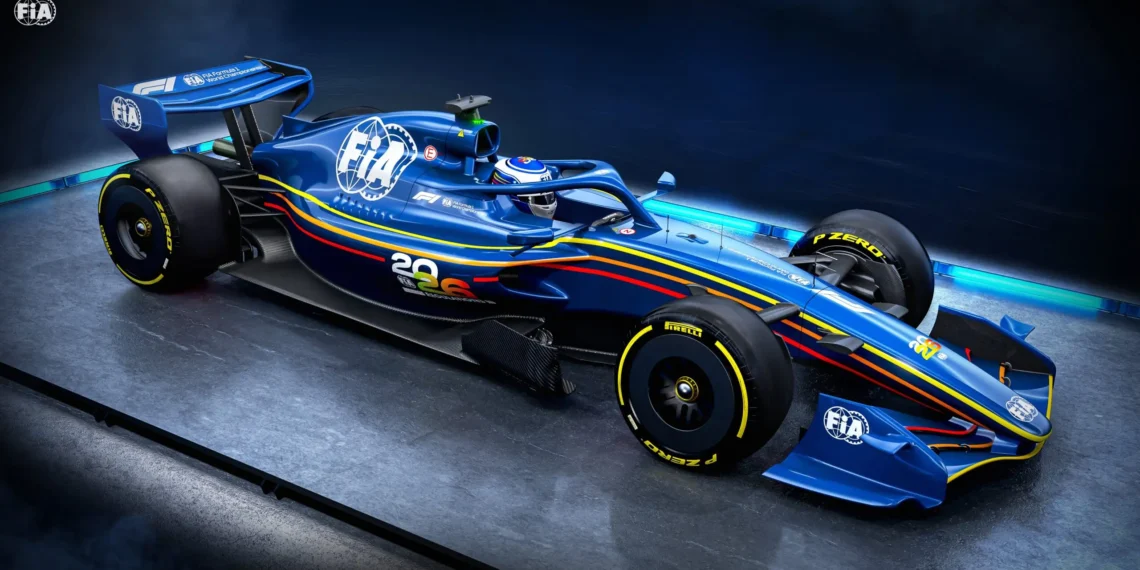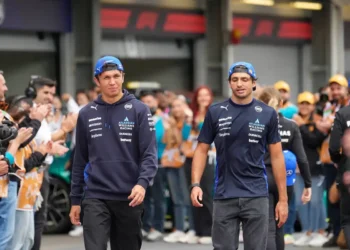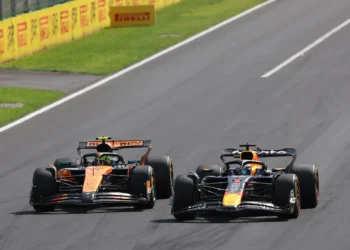Title: F1 Revolution: Are 2026 Cars Too Much for Drivers to Handle?
In a shocking revelation that has sent ripples through the world of motorsport, Williams team principal James Vowles has publicly acknowledged the escalating mental strain that drivers will face with the introduction of the all-new Formula 1 cars in 2026. As the sport braces for one of the most significant regulatory overhauls in its storied history, the question looms: Are these changes too extreme for the athletes at the wheel?
Next season, F1 is poised to unveil cars that dramatically shift both chassis and power units, heralding a new era where electric energy plays an almost equal role alongside traditional internal combustion engines. This seismic shift means that energy management will become a pivotal factor during races, pushing drivers to their limits like never before.
Early simulations have revealed that the 2026 models are not just a minor tweak from their predecessors but represent a massive leap in complexity. Drivers are already feeling the pressure, with Ferrari’s Charles Leclerc expressing frustration over the demanding nature of the new regulations during simulator sessions. Though most drivers are currently testing early prototypes that may not fully reflect the final product, the consensus is clear: the workload is intensifying.
Williams driver Alex Albon, however, has been more cautious in his assessment after experimenting with a more advanced simulator. He pointed out the significant mental gymnastics required to manage the energy states of the new car, stating, “It’s really early days at the moment, but just look at Formula E as a more extreme version as to where we’re going to go to. You can see how the drivers manipulate the race and qualifying and how they deploy and all these kinds of things to gain performance.”
Albon believes that only those drivers with the cognitive capacity to adapt to these demands will excel, emphasizing the urgent need for extensive simulator work over the winter months. “There’s going to be so much more attention on simulator work over the winter,” he noted, stressing the importance of understanding the intricacies of the new technology.
Vowles reassured fans and teams alike that while the initial reactions have been alarming, there’s no need for panic. He explained, “The first time any of our simulator drivers drove the 2026 regulations it was difficult… by the fourth time, it just became the norm.” However, he did concede that there is still substantial work ahead to alleviate the burdens placed on drivers. “We’ve got a lot more work to do to refine it, and we’ve got to make it easier on the driver,” he admitted, acknowledging the daunting challenge that lies ahead.
Despite concerns surrounding the potential for diminished overtaking opportunities due to the introduction of active aerodynamics and a new power-unit-based overtaking aid dubbed “manual override mode,” Vowles remained optimistic. “I think you’re going to get much bigger differences in straight-line speed on certain straights because of how much you can play with the energy and various modes,” he commented. This innovation could potentially enhance racing dynamics, rather than stifle them.
As the countdown to the 2026 season begins, excitement and trepidation intertwine in the paddock. With six months to go, the pressure is mounting for teams to meet the new demands of this rapidly evolving sport. Will they rise to the occasion, or will the 2026 cars prove to be too much for even the most skilled drivers? Only time will tell as we gear up for what promises to be a thrilling, yet challenging, new chapter in Formula 1 racing.













